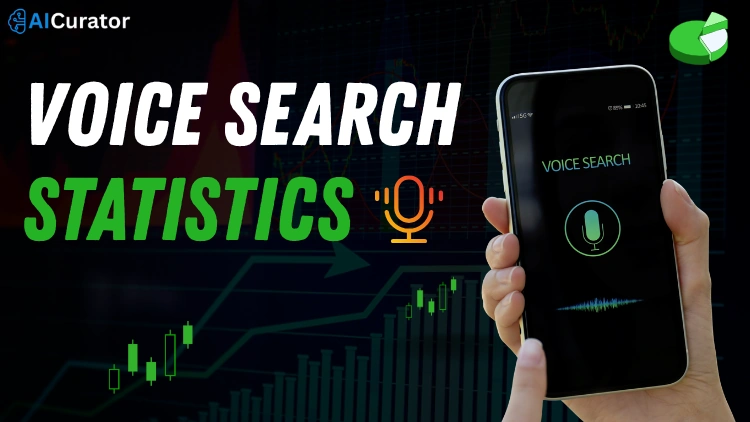Voice search isn’t just a trend—it’s part of everyday life, powering trillions of queries from checking the weather to shopping online. In 2025, over 20% of internet users worldwide are now speaking their searches, not typing them.
Here’s a fun fact: there are more voice assistants in use today than there are people on Earth! If you want to optimize for the future, this roundup of the essential Voice Search Statistics is your cheat sheet.
Let’s find out how smart speakers, Siri, Alexa, Google Assistant, and rising voice trends are changing how people and brands interact online.
Global Voice Search Adoption: Who’s Using Voice—and How Often?
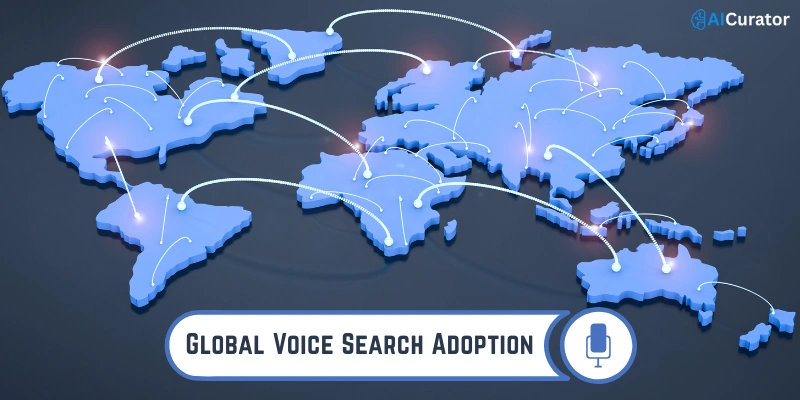
Fun Fact
Countries like Indonesia (38%), China (36%), and India (34%) show significantly higher voice search adoption rates than the global average, indicating cultural and technological factors that favor voice interactions.
═════ United States Voice Search Statistics ═════
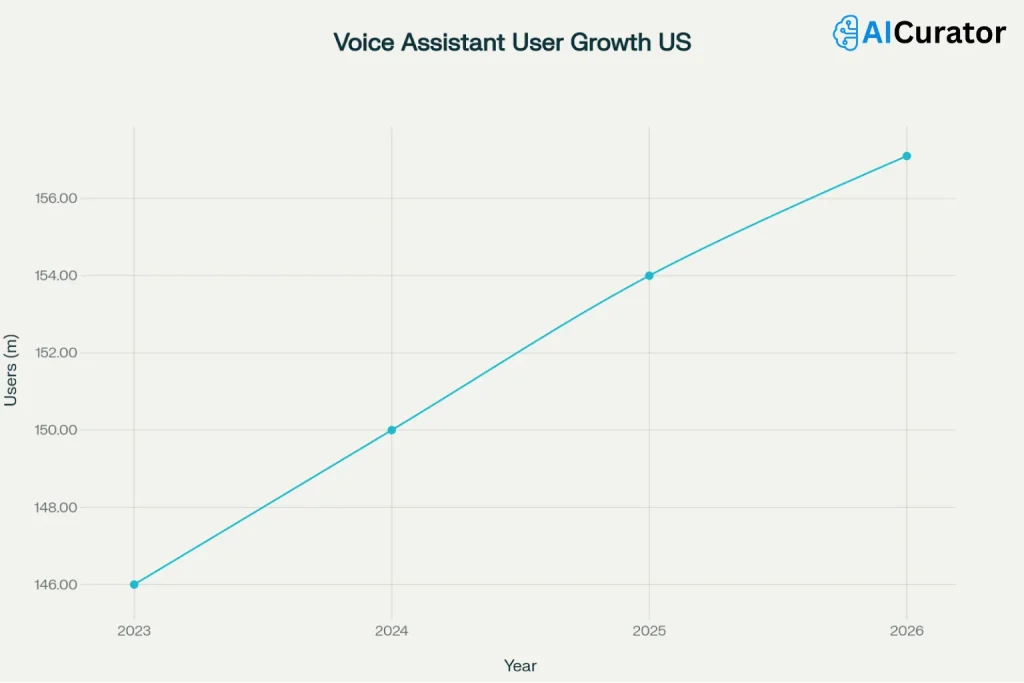
The U.S. market represents one of the most mature voice search ecosystems globally, with comprehensive data available across multiple demographics and device categories.
153.5 million Americans are expected to use voice assistants in 2025, representing a 2.5% increase from 2024. This growth trajectory shows:
| Year | Voice Assistant Users | Percentage Increase |
|---|---|---|
| 2026* | 157.1 million | 1.3% |
| 2025* | 153.5 million | 2.5% |
| 2024 | 149.8 million | 2.5% |
| 2023 | 146 million | 2.8% |
58.6% of U.S. consumers have tried voice search at least once, while 41% of adults and 55% of teens use voice search daily. The technology has particularly strong adoption among younger demographics, with 77% of 18-34 year-olds using voice search on smartphones.
═════ Voice Assistant Market Share and Usage ═════
The voice assistant marketplace is dominated by three major players, each serving different market segments and user preferences.
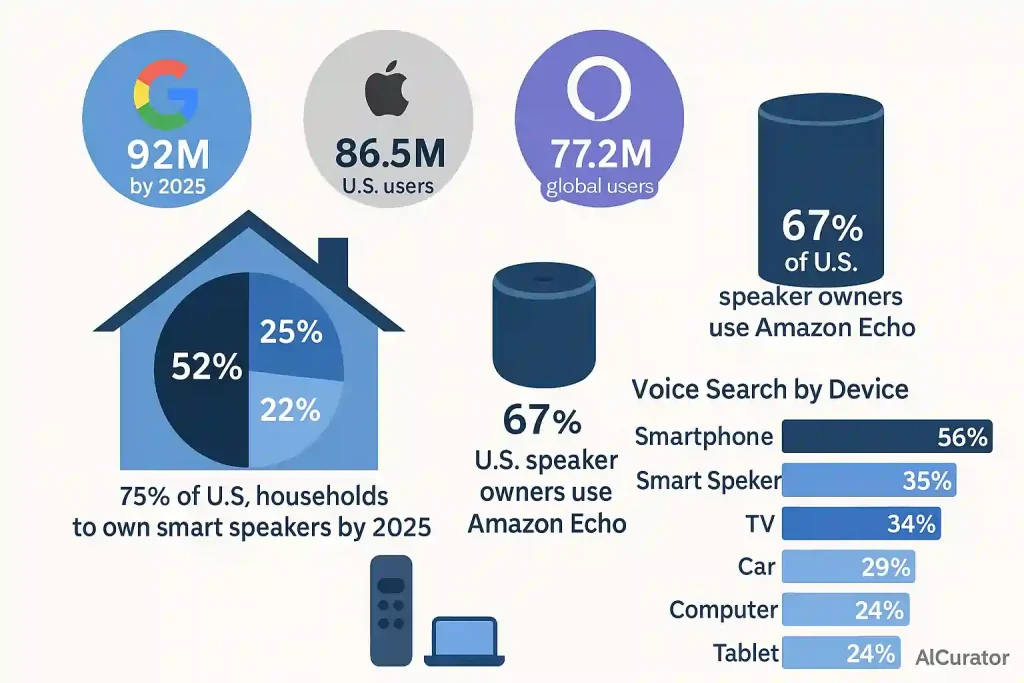
Siri leads with 86.5 million users in the United States, while Google Assistant is projected to reach 92 million users by 2025. Amazon's Alexa maintains a strong presence with 77.2 million users globally.
Smart speaker ownership shows impressive penetration:
Device preferences for voice search vary significantly:
| Device | Percentage of Users |
|---|---|
| Smartphone | 56% |
| Smart Speaker | 35% |
| TV/TV Remote | 34% |
| Car | 29% |
| Computer/Laptop | 24% |
| Tablet | 24% |
═══ Voice Search Usage Patterns and Behaviors ═══
Understanding how people use voice search reveals important insights for businesses and content creators. 71% of users prefer voice search over typing, citing speed and convenience as primary motivators.
Daily usage statistics show strong engagement:
Top voice search activities in the United States include:
| Activity | Percentage of Users |
|---|---|
| Weather | 75% |
| Music | 71% |
| News | 64% |
| Entertainment | 62% |
| Retail | 54% |
| Food Delivery | 52% |
| Healthcare | 51% |
Local business searches represent a crucial segment, with 76% of voice searches focused on finding nearby businesses. This trend makes local SEO optimization essential for businesses targeting voice search traffic.
Voice Search SEO and Technical Statistics
Voice search optimization requires understanding technical factors that influence rankings and visibility in voice results.
Featured snippets dominate voice search results, accounting for 40.7% of all voice answers. This makes optimizing for featured snippets crucial for voice search SEO success.
Key technical voice search SEO statistics:
Voice search queries differ significantly from text searches:
Domain authority matters for voice search rankings, with successful results having an average domain rating of 76.8. Social engagement also correlates with voice search success, as results average 1,199 Facebook shares and 44 Twitter shares.
═════ Voice Commerce and Shopping Statistics ═════
Voice commerce represents a rapidly growing segment of e-commerce, with significant implications for retailers and marketers.
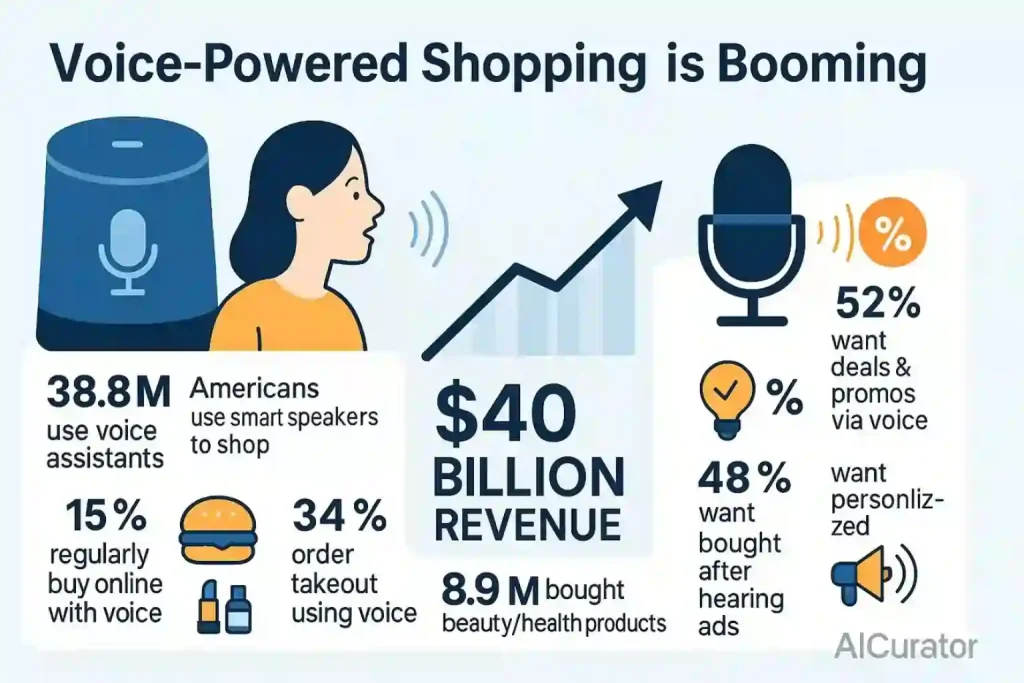
38.8 million Americans (13.6% of the population) use smart speakers for shopping, while 51% of online shoppers use voice assistants to research products. The convenience factor drives adoption, with 47.8 million U.S. consumers using smart speakers for shopping in 2024.
Shopping behavior patterns show:
Brand engagement through voice shows promising results:
═══ Voice Search Accuracy and User Satisfaction ═══
Voice recognition technology has achieved impressive accuracy levels, contributing to high user satisfaction and continued adoption.
Voice assistants demonstrate 93.7% accuracy in answering search queries, with Google Assistant leading at 100% query understanding and 92.9% correct answers. Siri follows with 99.8% understanding but 83.1% accuracy, while Alexa achieves 99.9% understanding with 79.8% accuracy.
User satisfaction metrics reflect this improved performance:
- 93% of consumers are satisfied with their voice assistants
- 65% of smart speaker owners can't imagine life without them
- 90% believe voice search is easier than online searching
Consistency across devices remains a challenge, with only 22% of voice search results matching across different platforms. This inconsistency highlights the importance of optimizing for multiple voice platforms.
══ Voice Search Market Growth and Future Projections ══
The voice search market shows robust growth projections across multiple segments and geographic regions.
Market size projections indicate significant expansion:
User growth expectations show continued adoption:
═══ Industry-Specific Voice Search Applications ═══
Different industries show varying levels of voice search adoption and usage patterns, creating unique opportunities for sector-specific optimization.
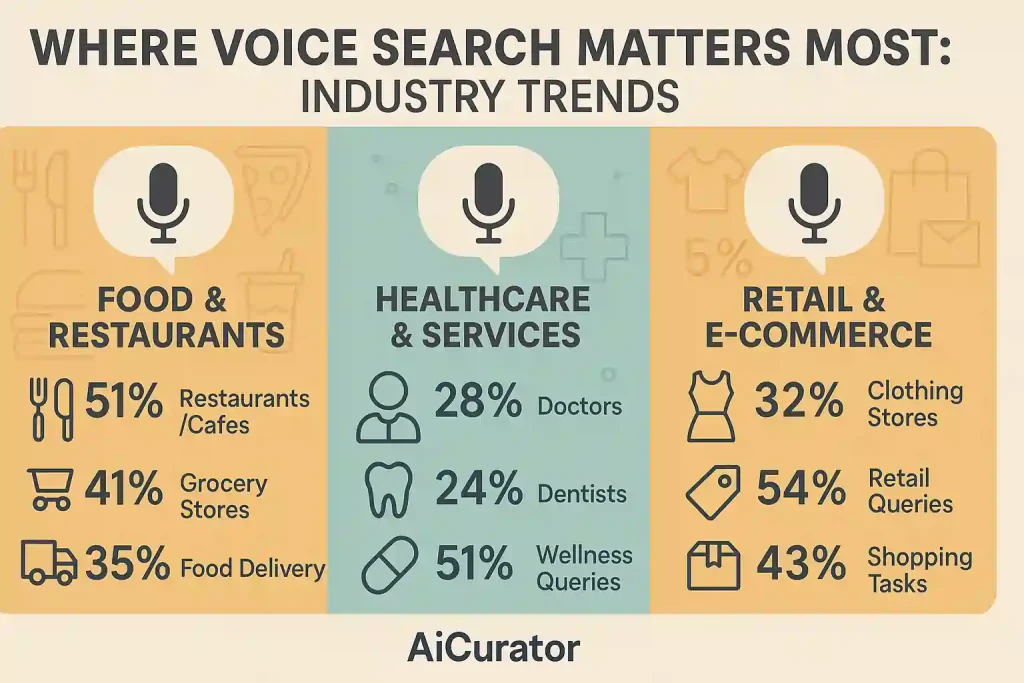
Restaurant and food industry leads in voice search engagement:
- 51% of voice users search for restaurants and cafes
- 41% search for grocery stores
- 35% use voice for food delivery
Healthcare and professional services show growing adoption:
- 28% search for doctors
- 24% search for dentists
- 51% use voice for healthcare and wellness queries
Retail and e-commerce sectors benefit from voice search:
- 32% search for clothing stores
- 54% use voice for retail queries
- 43% engage with voice for shopping-related tasks
═══ Voice Search Challenges and Privacy Concerns ═══
Despite high satisfaction rates, voice search adoption faces several challenges that impact user behavior and market growth.
Privacy concerns represent the primary barrier:
Technical limitations also affect user experience:
═════ Optimizing for Voice Search Success ═════
Businesses looking to capitalize on voice search trends should focus on specific optimization strategies based on current usage patterns and technical requirements.
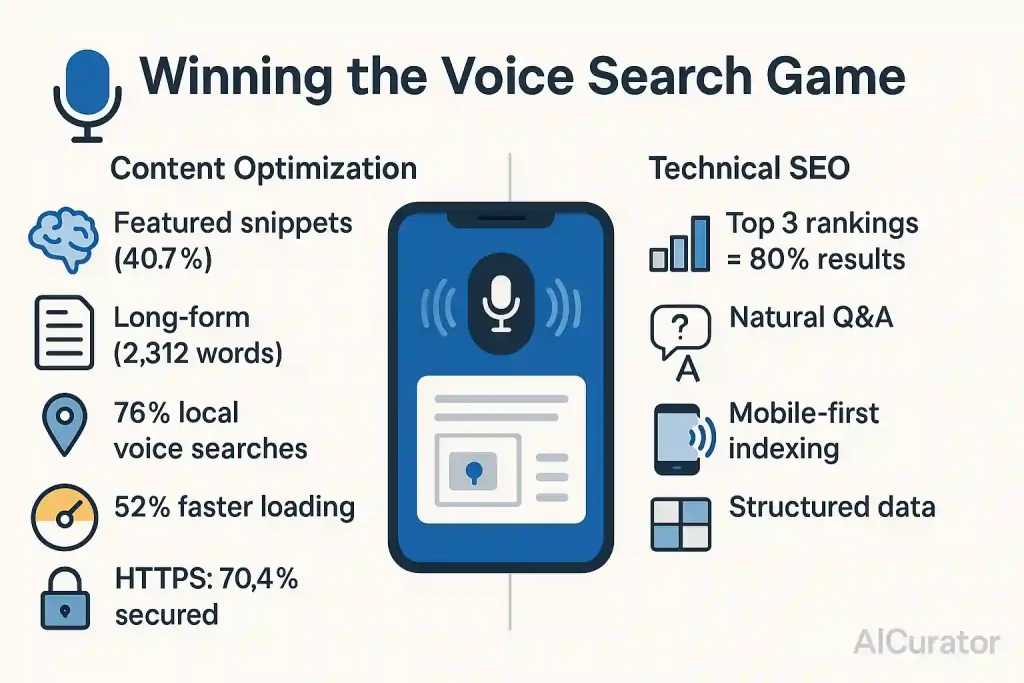
Content optimization priorities include:
Technical SEO factors for voice search:

More from AICurator:
Conclusion: What Voice Search Statistics Signal for Brands in 2025
1 in 5 people worldwide use voice search, with over 8 billion assistants in circulation—more than the global population. Voice-enabled queries are influencing everything from SEO to commerce and local search results.

To stay ahead businesses must optimize for conversational keywords, prioritize mobile-first content, and engage consumers across smart speakers, phones, and emerging platforms.
Actionable insight: Focus on creating voice-friendly, featured snippet-rich content and get your brand ready for a world that talks, not types.
Need more stats or trends on voice search usage and SEO strategies for this year? Keep this guide handy—and remember, your next customer might just be asking their device for you.







